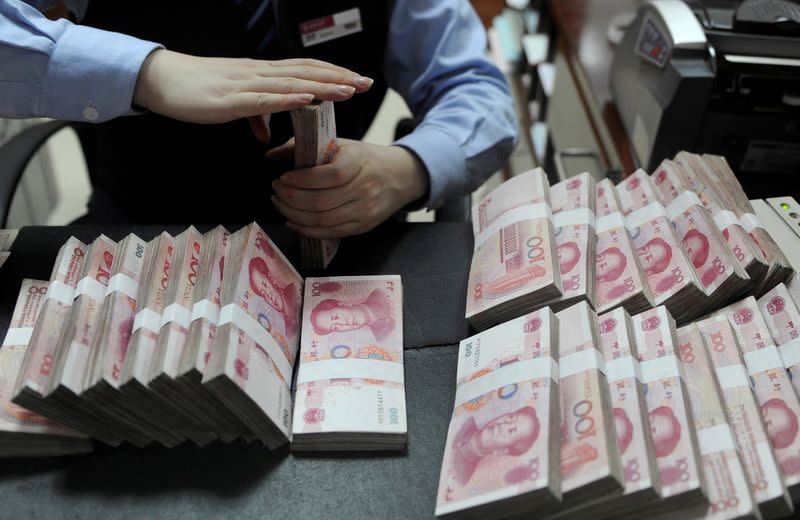China’s onshore yuan plummeted its weakest level since the global financial crisis on Friday, hit by capital outflow pressures as the world’s No2 economy continues to struggle.
A growing yield gap with other major economies, particularly the United States, has also put fresh pressure on the yuan and a number of other emerging currencies.
The onshore yuan ended the domestic trading session at 7.3415 per dollar, its weakest close since December 26, 2007.
The yuan, one of region’s worst performing currencies, has lost 1.0% against the dollar so far this week and depreciated roughly 6.1% so far this year, as the dollar climbed and China’s post-pandemic recovery quickly lost steam.
Also on AF: Hong Kong Shuts Down After Heaviest Rain on Record
Analysts and traders expect the currency to face further selling pressure in the near term but expect losses will likely be measured.
On Friday, the central bank again looked to be shoring up the currency by setting guidance through its daily fixing.
Prior to the market’s opening, the People’s Bank of China (PBOC) set the midpoint rate at 7.215 per US dollar, 164 pips weaker than the previous fix of 7.1986.
The fix was set weaker than prior days, implying that the PBOC could be allowing the yuan to gradually drift lower, Maybank analysts said in a note.
A widening services trade deficit from outbound tourism or overseas study, and reduced incentives for Chinese exporters to convert proceeds back to yuan due to a wide interest rate gap, may be downside factors in the near term, said Becky Liu, head of China macro strategy at Standard Chartered Bank.
But Liu did not expect a sharp move in the yuan soon “as the PBOC’s stance to defend the currency around current levels remains very strong”, Liu said.
“I think the PBOC will take a further action such as state banks’ dollar selling in the market,” said Kiyong Seong, lead Asia macro strategist at Societe Generale CIB.
Offshore Yuan Struggles Against Dollar
Yuan weakness this week is not an isolated event as higher oil prices and resilient US economic data helped strengthen the dollar, Seong noted.
Meanwhile, market participants are anticipating a funding squeeze in the offshore yuan market to slow down this week’s depreciation, UBS analysts wrote in a note.
The offshore yuan weakened to a low of 7.3621 per dollar, the softest level since October 2022, and was trading at 7.3472 per dollar around 0855 GMT.
A Chinese state-owned newspaper said on Friday that with the economy gradually recovering, there should be a little more confidence in the yuan exchange rate.
The rapid decline of the yuan has prompted authorities to roll out a slew of measures recently to contain the weakness.
- Reuters with additional editing by Sean O’Meara
Read more:
China Limits Offshore Bond Purchases to Bolster the Yuan
China’s State Banks Seen Buying Yuan in Offshore Markets
China’s Diving Yuan Could Spark Next Crisis, Hedge Fund Warns
Chinese Yuan Surges After Beijing’s Vow of Support
























